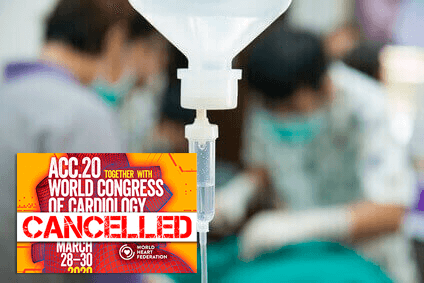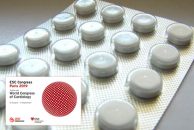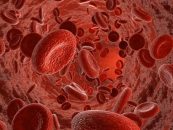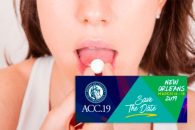In patients undergoing transcatheter aortic valve replacement (TAVR) that also required anticoagulation for another indication (mostly atrial fibrillation), the incidence of major bleeding between month 1 and 12 was lower in those receiving only anticoagulation instead of anticoagulation + clopidogrel. The present study presented as part of the scientific sessions at the virtual ACC 2020,…
Alcohol and Atrial Fibrillation: More Reasons for Moderate Consumption
Reducing alcohol consumption should be included in the “package” of secondary prevention recommendations, not only for its impact on arteries, but also because it reduces atrial fibrillation (AF). Alcohol abstinence might improve arrhythmia symptoms and reduce the chances of recurrence in patients who have already had an episode of AF. Regular alcohol consumers who were…
Benefit of Anticoagulation in the Elderly with Atrial Fibrillation
Guidelines recommend oral anticoagulation for all ≥ 75-year-old patients with atrial fibrillation. However, there is little evidence as to its net clinical benefit in the elderly population. This study looked at the life net clinical benefit in atrial fibrillation patients over 75 years of age treated with warfarin or apixaban vs. no treatment. Researchers observed…
Net Benefit of Left Atrial Appendage Closure vs. Anticoagulation in Atrial Fibrillation
This analysis shows that the long-term clinical benefit of left atrial appendage closure with Watchman is superior to warfarin in patients with atrial fibrillation (AF). The initial peri-procedural risks of device implantation are counterbalanced over time, with reduced risk of bleeding and death. The PROTECT-AF (Watchman Left Atrial Appendage Closure Technology for Embolic Protection in…
ESC 2019 | AFIRE: Monotherapy with Rivaroxaban in Atrial Fibrillation and Stable CAD
In patients with atrial fibrillation and stable coronary artery disease who have not had revascularization procedures in the last 12 months, monotherapy with rivaroxaban seems the best treatment strategy compared to rivaroxaban plus antiplatelet antiaggregation. This is what resulted from the AFIRE study, presented during the ESC 2019 in Paris and published in NEJM. Monotherapy…
Permanent Carotid Coil Filters in Patients with Atrial Fibrillation
This new strategy to reduce the risk of stroke in patients with atrial fibrillation is technically feasible and safe, even though long-term outcomes are yet to be seen and despite the evidence available, for instance, left atrial appendage closure devices. It is true that they could be used simultaneously, but its synergy and cost have…
PCI and Anticoagulation: What is the best strategy?
Most patients with atrial fibrillation require anticoagulation to reduce the risk of stroke or systemic embolization. Today, this is achieved with the new direct oral anticoagulants, which present lower intracranial bleeding risk compared against the old vitamin K antagonists. On the other hand, approximately between 5% to 10% of patients receiving PCI also present atrial…
5-Year Experience of Appendage Closure: More Evidence that Does Not Translate into Clinical Practice
The use of percutaneous left appendage closure increased 3.6-fold from 2011 to 2015, but this volume increase did not entail a significant uptrend of in-hospital events in this “real-world” population in Germany. However, can Germany be considered a real-world setting for Latin America? This question is warranted by the fact that there is no apparent…
Antithrombotic Strategies in Atrial Fibrillation and Angioplasty
What is the most appropriate antithrombotic strategy for a patient with atrial fibrillation and coronary artery disease, particularly when admitted with acute coronary syndrome or undergoing coronary angioplasty? This is a question whose answer is still in the works and that literature is addressing dynamically. Whatever we read yesterday may already be out of date…
ACC 2019 | AUGUSTUS: Apixaban Plus P2Y12 Inhibitor Is the Best Combination in Atrial Fibrillation and Angioplasty
Aspirin increases bleeding with no ischemic benefit, but a trend toward more stent thrombosis with placebo warrants further studies. Patients with atrial fibrillation who receive an anticoagulant agent and coronary angioplasty with a stent, and then continue with aspirin, experience an increased risk of bleeding without any ischemic benefit whatsoever. The use of a…








